Archives
How To Choose A Tent That Is Right For You
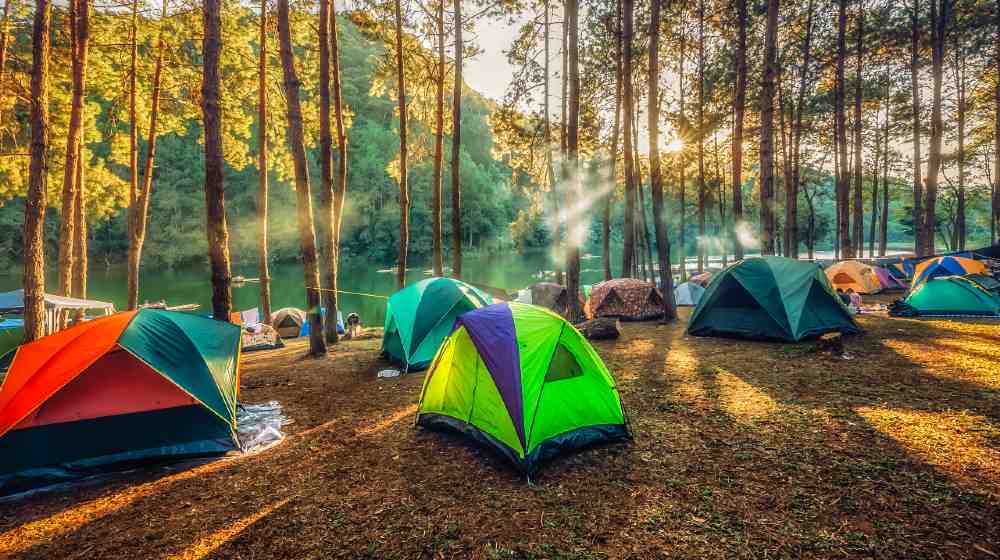
No camping is complete without a tent. It is an essential part of your arsenal if you breathe the great outdoors. That’s why it pays to invest in the best quality tent.
RELATED: 7 Steps To Setting Up Your Camping Tent
Picking the Best Camping Tents
Click here to jump to the infographic.
1. Choose the Right Size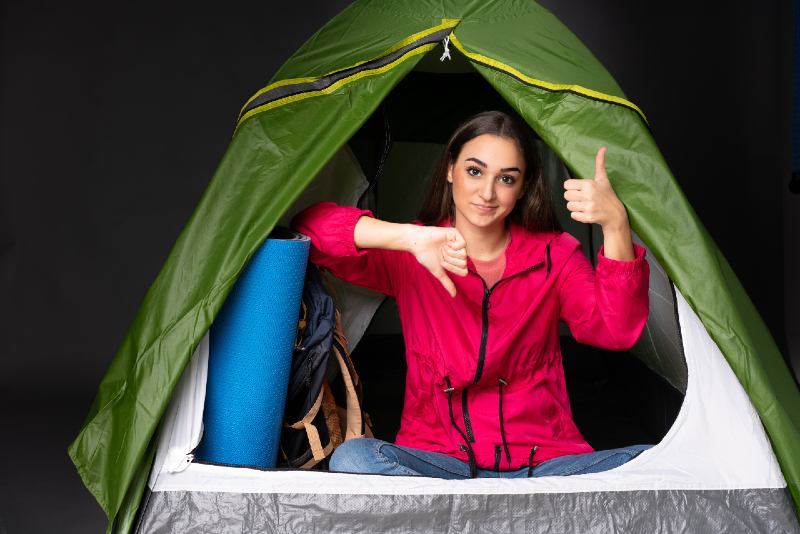
The first thing that you need to consider is the size. Do you need one that is good for two persons or something bigger? The size of a tent is determined based on the number of adults capable of sleeping on its side by side.
If you usually travel light and alone, you could go for a smaller tent with a two to three person-capacity. But if more often than not, you go camping with the whole family or a bunch of friends, a large tent is the way to go. Tents of this size can house six to eight persons in a sleeping position.
2. Determine When and Where You Camp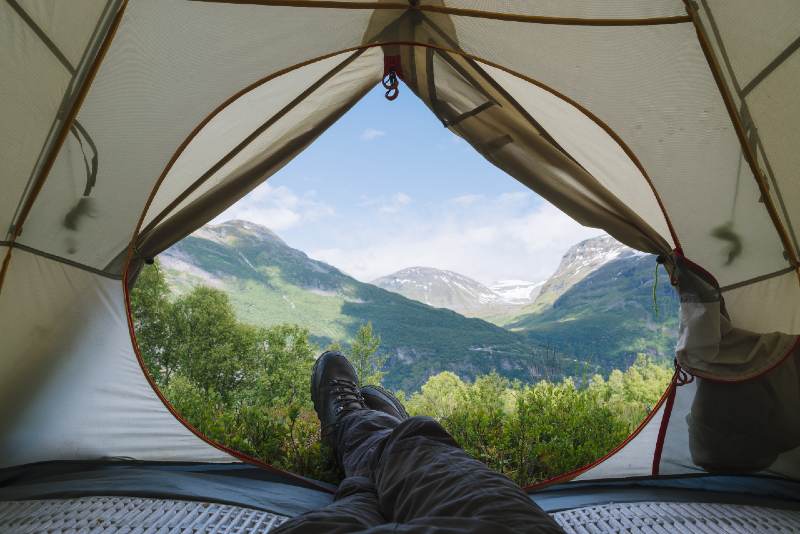
When deciding on what tent to buy, it is also important to consider the time and space factors of the equation. What time of year do you usually go camping? Where is your go-to camping site? The answers to these questions will determine the type of tent you should choose.
If you prefer camping during cool weather or in a place with a cold climate, go for a tent with thicker sides and with a mesh top. For warm weather or climate camping, choose a 90% mesh tent with windows for ventilation. As a rule, a bigger tent means more air to heat and vice versa.
3. Choose the Right Weight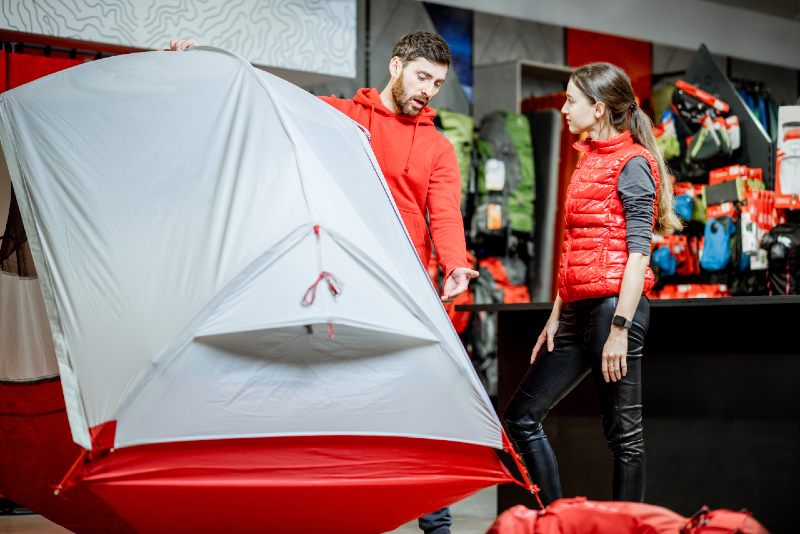
Unless you just put your tent at the back of your car during a trip, weight is a non-issue. Some campers though prefer to carry their tents on the way to the campsite. This is when weight becomes a consideration.
A regular ten can weigh up to 20 pounds. Some elaborate models can be as heavy as 40 pounds! That’s a hassle if you are talking about a 20 to 30-mile trek. So, if you are most likely to hike and carry a lot of equipment on your back, opt for lightweight tents.
4. Consider Tent Capacity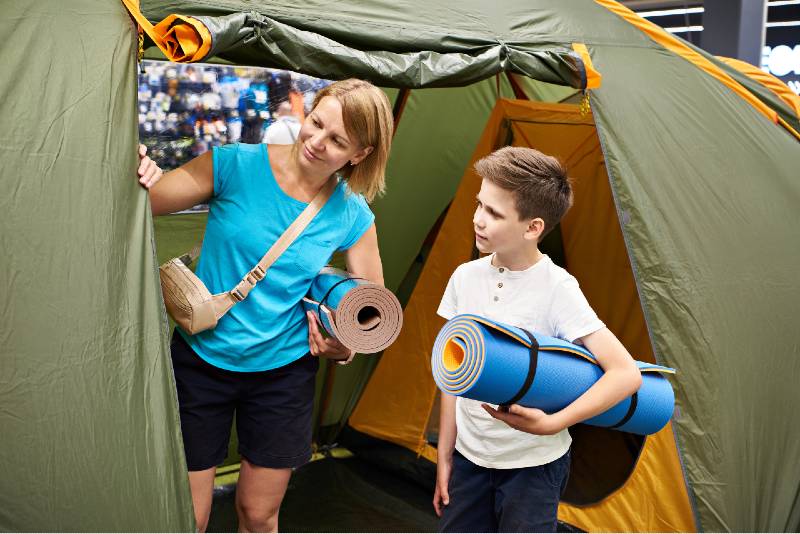
Another important question is who will be sleeping in the tent? Are we talking about a combination of adults and children here? If yes, how will they be sleeping? Will they be using mattresses or sleeping pads? These are considerations that you also need to put in mind.
Kids may be smaller but they tend to move a lot so they could take more space than adults. Given this kind of factor, it is crucial to check the internal dimensions of the tent you plan to choose. For instance, tents with sloping walls can pose space problems. If a tent is steeply sloped, make sure there’s enough space between the sides and the sleepers.
RELATED: The Next Big Thing in Camping: Bubble Tents
5. Choose the Right Shape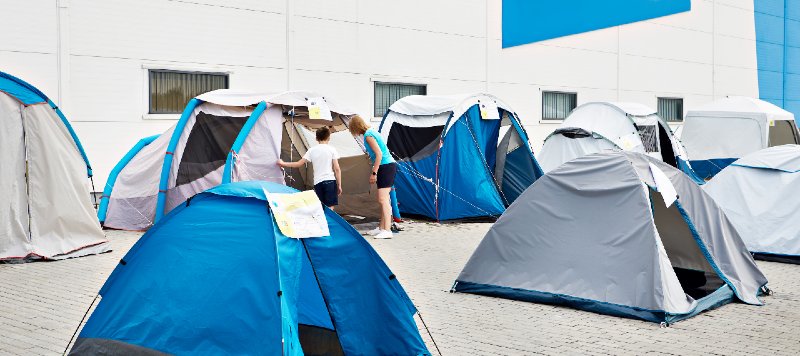
Tents come in an assortment of shapes and sizes. Choose one that would be best for your needs and preference. Two of the most popular tent shapes are dome and cabin. Both have their advantages and disadvantages.
Dome tents have sloped walls which make the space inside more constricted compared to regular ones. However, this same shape makes it more resistant to strong winds during bad weather. A cabin tent is the opposite but it is more spacious. The shape consideration all boils down to strength vs. capacity
6. Test Your Tent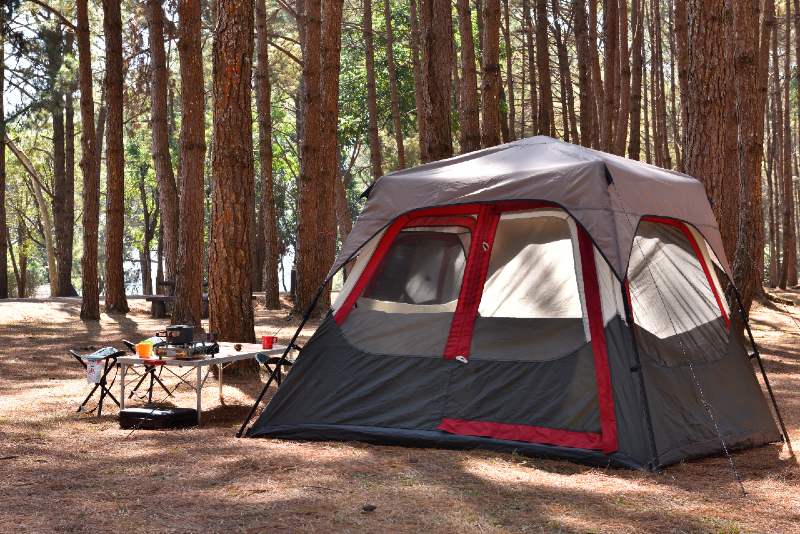
You will never know if a product you purchase is a lemon until you use it. After buying your tent, it is highly advisable to set it up immediately after you got home. This way, you will be able to check if there are missing pieces or if some parts are defective.
This practice also functions as a dry-run before you set the tent up in the actual campsite. Figuring out where to put what will be less of a hassle after testing your tent. Once you are at the campsite, setting up your tent will be much faster and less troublesome.
7. Opt for Models with Repair Kit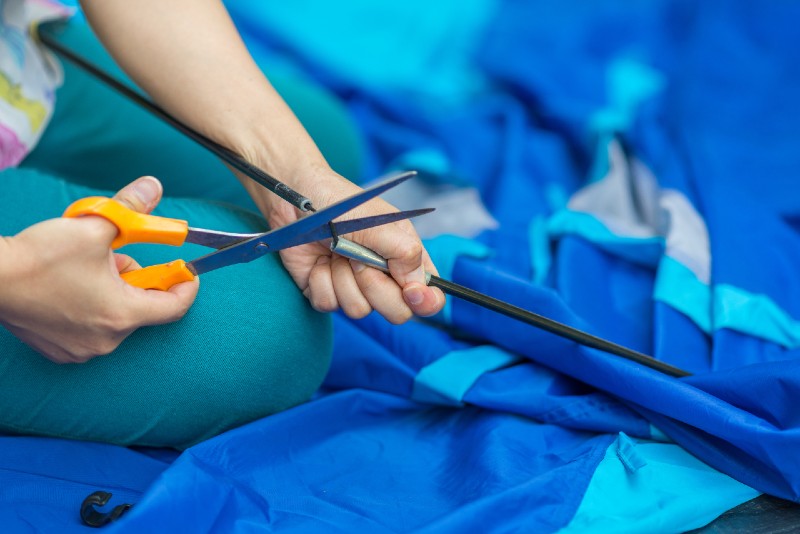
Spending extra bucks on a tent model that comes with a repair kit is worth it. It will spell the difference between comfort and sleeping in cold wet broken tents in the woods. More manufacturers nowadays offer affordable tents with emergency repair tools.
Having to deal with a ripped canvas or a broken frame during a rainy night is a living nightmare. But problems like this could be easily resolved with a simple tent repair kit. Again, use the Internet to hunt for the best deals.
8. Choose the Best Price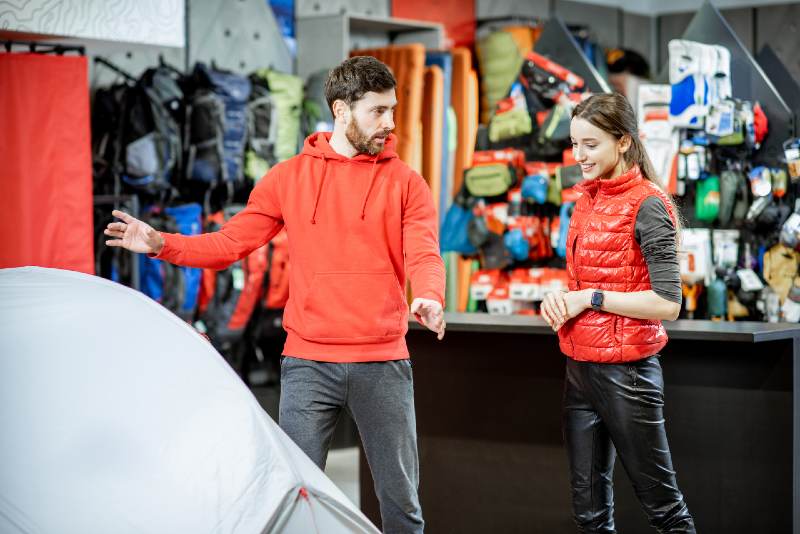
Shelling nine hundred bucks for a 13×16 canvass tent would be reasonable to some who have the cash to spare. To other people, however, this could be too much. Pick a camping tent that would suit your budget. Cheap tents though don’t always equate to low quality.
Brands like Core, Coleman, and many more offer a wide array of budget-friendly yet decent to top-quality tent models. From time to time, top manufacturers even put some of their products on sale. You just need to do some research online to find the best one for you.
Here’s an infographic guide. Don’t forget to download, save, or share this handy infographic for reference:
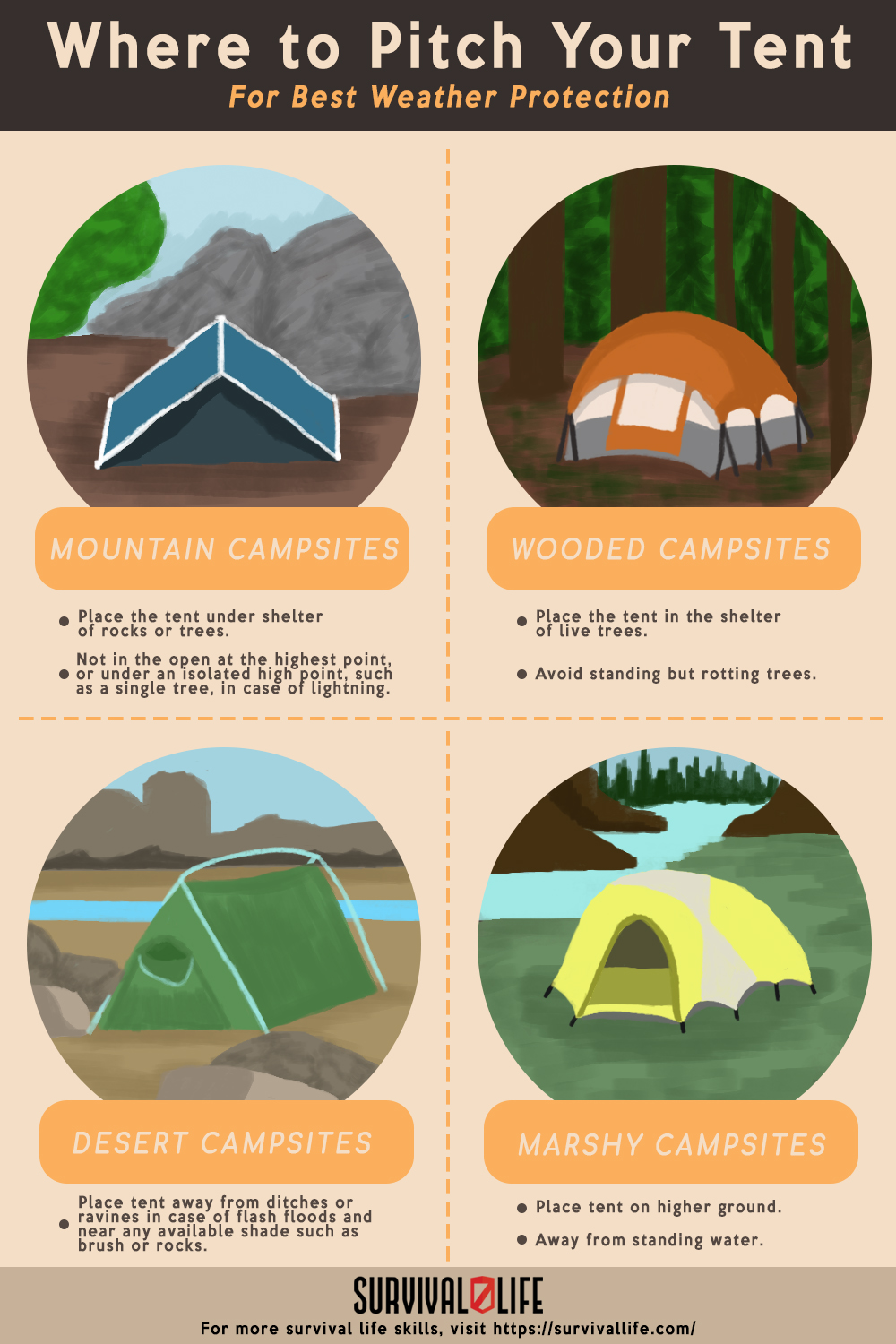
Check out this best camping tents video by Survival Gear:
There’s a confusion of tents available in the market today. They come in a variety of shapes and sizes. It is easy to get lost with the barrage of options available. Focus, however, is the key.
In choosing the right tent, pick one that suits your needs. Narrow down every quality that tops our checklist. Tents can be expensive and you might end up buying one that does not fit your specific needs. That could be a waste of time and, of course, money.
That’s about it. With these practical tent-shopping tips, you can save yourself considerable time and effort and, of course, money. Don’t rush yourself. Think before you click the purchase button!
[poll id=”52″]
When and where do you usually go camping? Feel free to share your thoughts in the comment section below.
Up Next:
- How to Book a Campsite from Parks to RVs to Backyards
- How to Build A Campfire
- 10 Innovative Ways To Use Binder Clips for Survival
Calling all preppers, craftsmen, bushmasters, outdoorsmen, and all-around skilled people, Survival Life needs YOU! Click here if you want to write for us.
Don’t forget to stay connected with us on Facebook, Twitter, Pinterest, and Instagram!
-

 Do It Yourself7 months ago
Do It Yourself7 months agoParacord Projects | 36 Cool Paracord Ideas For Your Paracord Survival Projects
-

 Do It Yourself9 months ago
Do It Yourself9 months agoHow To Make Paracord Survival Bracelets | DIY Survival Prepping
-

 Do It Yourself9 months ago
Do It Yourself9 months ago21 Home Remedies For Toothache Pain Relief
-

 Do It Yourself10 months ago
Do It Yourself10 months agoSurvival DIY: How To Melt Aluminum Cans For Casting
-

 Exports8 months ago
Exports8 months agoAre Switchblades Legal? Knife Laws By State


Don P Morris
August 23, 2021 at 2:52 PM
Whomever wrote this slop has obviously never backpacked…..